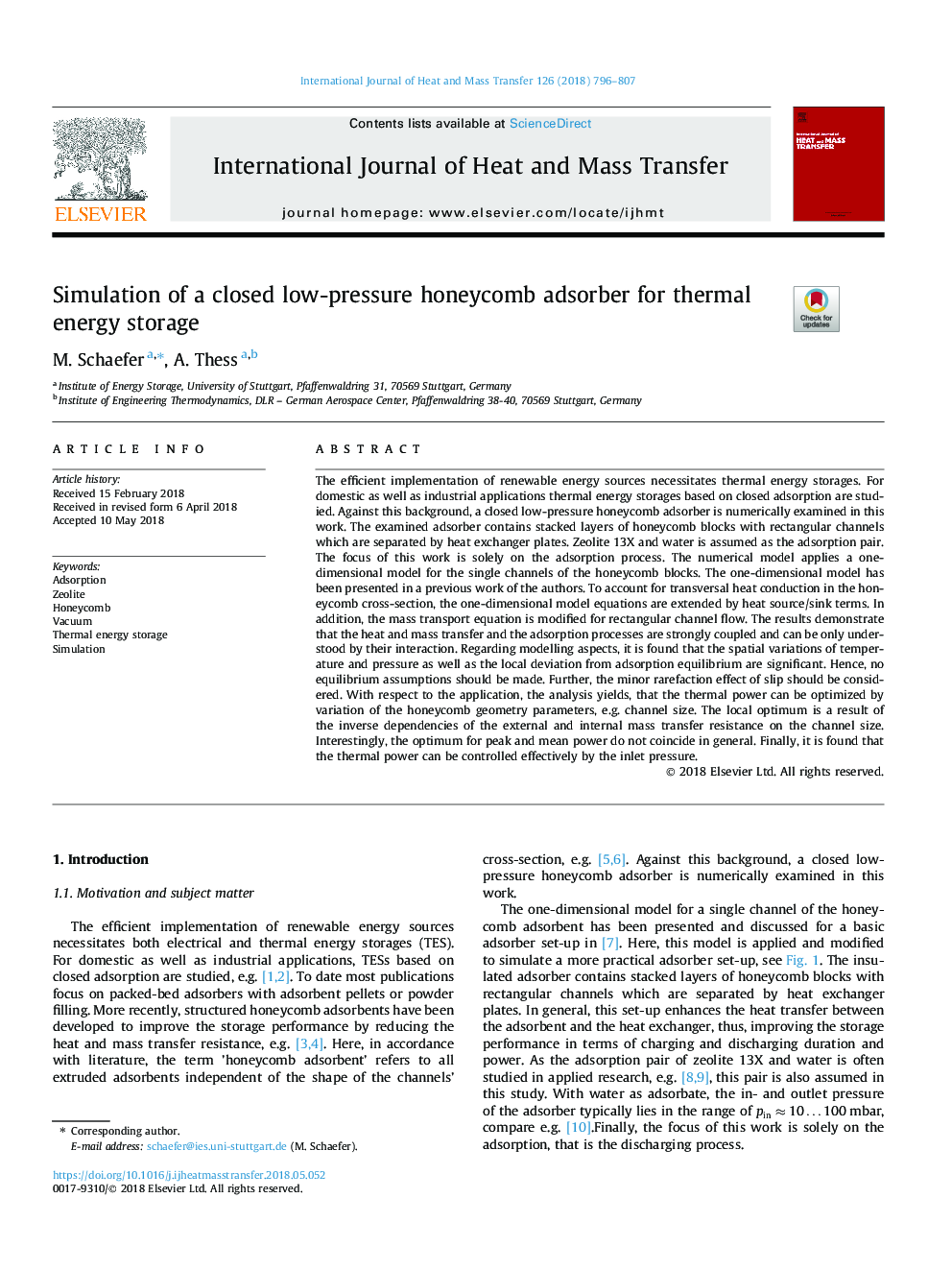| کد مقاله | کد نشریه | سال انتشار | مقاله انگلیسی | نسخه تمام متن |
|---|---|---|---|---|
| 7053909 | 1458013 | 2018 | 12 صفحه PDF | دانلود رایگان |
عنوان انگلیسی مقاله ISI
Simulation of a closed low-pressure honeycomb adsorber for thermal energy storage
ترجمه فارسی عنوان
شبیه سازی یک جاذب لانه زنبوری با فشار پایین برای ذخیره انرژی حرارتی
دانلود مقاله + سفارش ترجمه
دانلود مقاله ISI انگلیسی
رایگان برای ایرانیان
کلمات کلیدی
جذب، زئولیت، شانه عسل، خلاء، ذخیره انرژی حرارتی، شبیه سازی،
موضوعات مرتبط
مهندسی و علوم پایه
مهندسی شیمی
جریان سیال و فرایندهای انتقال
چکیده انگلیسی
The efficient implementation of renewable energy sources necessitates thermal energy storages. For domestic as well as industrial applications thermal energy storages based on closed adsorption are studied. Against this background, a closed low-pressure honeycomb adsorber is numerically examined in this work. The examined adsorber contains stacked layers of honeycomb blocks with rectangular channels which are separated by heat exchanger plates. Zeolite 13X and water is assumed as the adsorption pair. The focus of this work is solely on the adsorption process. The numerical model applies a one-dimensional model for the single channels of the honeycomb blocks. The one-dimensional model has been presented in a previous work of the authors. To account for transversal heat conduction in the honeycomb cross-section, the one-dimensional model equations are extended by heat source/sink terms. In addition, the mass transport equation is modified for rectangular channel flow. The results demonstrate that the heat and mass transfer and the adsorption processes are strongly coupled and can be only understood by their interaction. Regarding modelling aspects, it is found that the spatial variations of temperature and pressure as well as the local deviation from adsorption equilibrium are significant. Hence, no equilibrium assumptions should be made. Further, the minor rarefaction effect of slip should be considered. With respect to the application, the analysis yields, that the thermal power can be optimized by variation of the honeycomb geometry parameters, e.g. channel size. The local optimum is a result of the inverse dependencies of the external and internal mass transfer resistance on the channel size. Interestingly, the optimum for peak and mean power do not coincide in general. Finally, it is found that the thermal power can be controlled effectively by the inlet pressure.
ناشر
Database: Elsevier - ScienceDirect (ساینس دایرکت)
Journal: International Journal of Heat and Mass Transfer - Volume 126, Part B, November 2018, Pages 796-807
Journal: International Journal of Heat and Mass Transfer - Volume 126, Part B, November 2018, Pages 796-807
نویسندگان
M. Schaefer, A. Thess,
